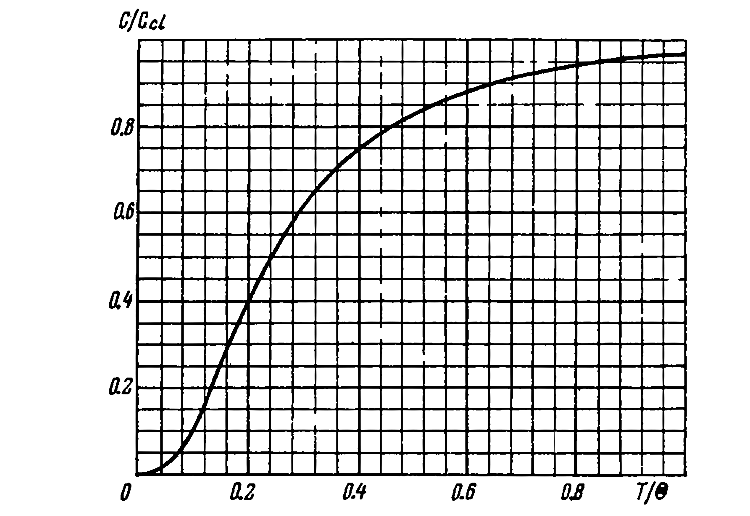Evaluate the proprgation velcocity of acoustic vibrations in aluminum whose Debye temperature id Θ=396K.
We apply the same formula but assume v∣∣≈v⊥. Then
Θ=ħkv(6π2n0)1/3
or v=kΘ/[ħ(6π2n0)1/3]
For Al
n0=ρNAM=6.023×1022perc.c
Thus v=3.39km/s.
The tabulated values are v∣∣=6.3km/s
and v⊥=3.1km/s
Topper's Solved these Questions
- BOOK - IE IRODOV, LA SENA & SS KROTOVCHAPTER - ATOMIC AND NUCLEAR PHYSICSEXERCISE - Radioactivity35videos
ATOMIC AND NUCLEAR PHYSICS
- BOOK - IE IRODOV, LA SENA & SS KROTOVCHAPTER - ATOMIC AND NUCLEAR PHYSICSEXERCISE - Nuclear Reaction42videos
ATOMIC AND NUCLEAR PHYSICS
- BOOK - IE IRODOV, LA SENA & SS KROTOVCHAPTER - ATOMIC AND NUCLEAR PHYSICSEXERCISE - Properties Of Atom69videos
ATOMIC AND NUCLEAR PHYSICS
- BOOK - IE IRODOV, LA SENA & SS KROTOVCHAPTER - DIRECT CURRENTEXERCISE - All Questions15videos
DIRECT CURRENT
Similar Questions
Evaluate the maximum value of energy and momentum of a phonon (acousite quantum) in copper whose Debyed temperature is equal to 300K.
View SolutionCalculate the zero-point energy per one gram of copper whose Debye temperature is Θ=330K.
View SolutionDemostrate that molar heat capacity of a crystal at a temperature T<Θ, where Θ is the Debye temperature, is defined by Eq. (6.4f)
View SolutionDerive the formula expressing molar heat capacity of a unidimensional crystal, a chain of identical atoms, as a function of temperature T if the Debye temperature of the chain is equal ot Θ. Simplyfie the octained expression for the case T>Θ
View SolutionCalculate the Debye temperature for iron in which the propagation velocities of longtitudinal and transverse vibrations are equal ot 5.85 and 3.23Km/s respectivel.
View SolutionFigure. 6.10 shows heat capacity of a crystal vs temperatue in terms of the Debye theory. Here Ccl is classical heat capacity Θ is the Debye temperature. Using this plot, find:
(a0 The Debye temperature for silver if at a temperature T=65K its molar heat capacity is equal to 15J(mol.K),
(b) the molar heat capacity of aluminum at T=80K if at T=250K it is equal to 22.4J(mol.K)
(c )the maximum vibration frequency for copper whose heat capacity at T=125K differs form the classical value by 25%.
 View Solution
View SolutionA rod of length l with thermally insulated lateral surface consists of material whose heat conductivity coefficient varies with temperature as k=a/T, where a is a constant. The ends of the rod are kept at temperatures T1andT2. Find the function T(x), where x is the distance from the end whose temperature is T1.
View SolutionA rod of length l with thermally insulated lateral surface consists of material whose heat conductivity coefficient varies with temperature as k=a/T, where a is a constant. The ends of the rod are kept at temperatures T1andT2. Find the function T(x), where x is the distance from the end whose temperature is T1.
View SolutionThe natural vibration frequency of a hydrogen molecule is 1.26×1014 Hz. Find the zero-point energy of the vibrations of the molecule. Can the vibrational degrees of freedom in the molecule be excited at 600 K?
View SolutionThe natural vibration frequency of a hydrogen molecule is 1.26×1014 Hz. Find the zero-point energy of the vibrations of the molecule. Can the vibrational degrees of freedom in the molecule be excited at 600 K?
View Solution

